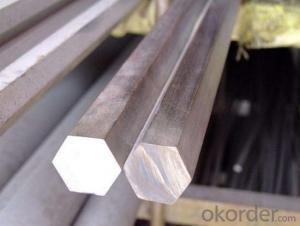Structural Marvels by Steel Structures of America
Steel, a material that has been a cornerstone of modern architecture and engineering, has given rise to some of the most awe-inspiring and structurally magnificent feats of human ingenuity. From the towering skyscrapers that scrape the sky to the elegantly curved bridges that span vast distances, steel has proven to be an indispensable element in the construction of these marvels. In this article, we will explore the unique characteristics of steel that make it the material of choice for many structural wonders and delve into some of the most iconic steel structures in America that have left an indelible mark on the landscape of our nation.
The Allure of Steel
Steel’s versatility, strength, and durability make it an ideal material for constructing large-scale structures. Its malleability allows architects and engineers to shape it into various forms, creating designs that push the boundaries of what is structurally possible. Steel’s strength-to-weight ratio is unmatched, enabling the construction of taller and longer structures without compromising stability. Moreover, steel’s resistance to wear and tear, as well as its ability to withstand harsh weather conditions, makes it a sustainable choice for long-lasting structures.
The Birth of Skyscrapers
The use of steel in construction took a giant leap forward with the advent of skyscrapers. The Home Insurance Building in Chicago, completed in 1885, is often credited as the first modern skyscraper, utilizing a steel frame to support its weight. This groundbreaking development allowed architects to reimagine the urban skyline, leading to the construction of iconic buildings such as the Empire State Building and the Chrysler Building in New York City. These architectural giants not only symbolize the spirit of American progress but also showcase the incredible potential of steel in achieving new heights.
The Golden Gate Bridge: A Suspension Masterpiece
When it comes to bridges, the Golden Gate Bridge in San Francisco is a prime example of steel’s capabilities. Opened in 1937, this suspension bridge spans the Golden Gate Strait, connecting the city to the Marin Headlands. The bridge’s distinctive orange color and its impressive 1.7-mile length make it a beloved landmark and an engineering marvel. The use of steel in the construction of the bridge allowed for the creation of two massive towers that support the main cables, which in turn carry the load of the bridge. The Golden Gate Bridge is a testament to the strength and flexibility of steel, as it withstands the forces of the wind and the weight of the traffic that crosses it daily.
The Eiffel Tower: A Transatlantic Inspiration
While not an American structure, the Eiffel Tower in Paris, France, serves as an inspiration for many steel structures in the United States. Designed by Gustave Eiffel and completed in 1889, the tower stands at an astonishing 1,083 feet and was the tallest man-made structure in the world at the time of its completion. The Eiffel Tower’s intricate lattice design is a marvel of engineering and a shining example of the aesthetic possibilities of steel. Many American structures, such as the St. Louis Gateway Arch, have been influenced by the Eiffel Tower’s pioneering use of steel.
The Petronas Twin Towers: A Symbol of Modernity
In the realm of modern architecture, the Petronas Twin Towers in Kuala Lumpur, Malaysia, stand as a symbol of steel’s role in shaping the future of construction. Completed in 1998, these twin buildings were the tallest in the world for a brief period. The towers feature a unique postmodern design, with a multi-layered facade and Islamic architectural elements. The use of steel in the construction of the Petronas Twin Towers allowed for the realization of this complex design, showcasing the material’s ability to adapt to the evolving demands of architectural innovation.
The Future of Steel in Construction
As we look to the future, steel continues to be a vital component in the construction of new and innovative structures. With advancements in technology and engineering, we can expect to see even more daring and ambitious projects that utilize the unique properties of steel. From self-healing materials to energy-efficient designs, the potential for steel in the construction industry is limitless.
In conclusion, steel structures have not only shaped the physical landscape of America but have also inspired a sense of awe and admiration for their beauty and strength. The ingenuity of architects and engineers in utilizing this material has led to the creation of structures that defy the constraints of gravity and push the limits of our imagination. As we marvel at these structural marvels, we are reminded of the power of human creativity and the endless possibilities that steel offers in the world of construction.

